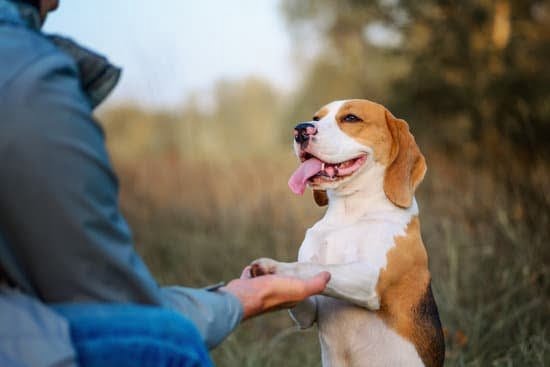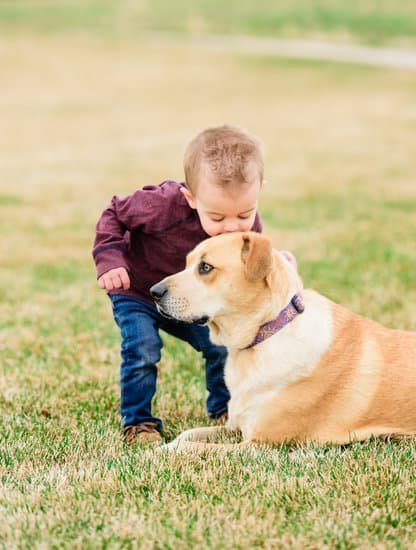Introduction
Training a dog to bite and hold onto a training sleeve is an essential skill for a well-behaved canine. For those committed to teaching their four-legged friend how to properly socialize with both other canines and humans, this technique is incredibly valuable. Not only will it assist in developing confidence in the pup, but most importantly, biting training teaches dogs the limits of acceptable behavior and encourages discipline. There are several steps involved in achieving success when teaching your pup how to bite and hold onto a training sleeve.
Step 1: Build Positive Interactions with the Training Sleeve
The first step in teaching a dog to bite and hold onto a training sleeve is introducing your furry companion to the item itself. Start by having him interact positively with it; for example, place treats on or around it in order to tie positive associations with holding or touching the sleeve. Allow your pup to smell, paw or lick the material—whatever works best for him—in order to desensitize him from any fear he may have of it.
Step 2: Begin Playing Tug-of-War Games
Once your pet has positive interactions with his training sleeve, start playing game of tug-of-war with him. This activity should be done gradually so as not to overwork his jaw and neck muscles right away. Also increase resistance incrementally if you sense that he’s getting used to the pressure applied by your hand during these games. Doing so helps further desensitize him over time, making it easier for him become comfortable grasping and biting down on the material when requested.
Step 3: Introduce Reinforcements
Incorporating reinforcements within each stage of bite training is key in encouraging good behavior from your pup; reward his good performance during each session whether it be verbal affirmations or food rewards like treats or kibble pieces. Putting reinforcement protocols in place allows you to deploy them rapidly whenever your pet does something correctly at any point during practice sessions without being overly reliant food rewards all the time.
Essential Tools and Supplies
To train a dog to successfully bite a training sleeve, there are some essential tools and supplies you should have before getting started. First and foremost, you should make sure you have an appropriate training sleeve that is made specifically for teaching bite work- not just any fabric or clothing item will do. Secondly, you should acquire treats that can be used as rewards during the process, as well as tug toys to hold onto while teaching and motivating the dog. It can also be helpful to have a clicker on hand, which can be used to mark behaviors in order to reinforce them. Lastly, it is important to have a safe area (such as your yard) where distractions are kept low and your pup feels comfortable working. With these items at hand, you’re ready to get started with training!
Preparing Your Dog for Training
The first step in training a dog to bite a training sleeve is introducing the pup to it. It helps if your pup is familiar with the texture and smell of the sleeve before starting training sessions. To do this, let them sniff and explore the sleeve with their mouth, holding it up from the sides, never from the top. Reward them for paying attention to it and eventually offer treats as an incentive for exploring and interacting with it. Once your pup is used to seeing and touching the sleeve, then you can start teaching them how to bite it correctly.
Teaching Your Dog
Once you have decided to use a training sleeve as part of your dog’s training routine, the next step is teaching them how to bite the sleeve. This task requires patience and consistency from you and should be done in an enclosed environment with limited distractions. Here are some steps that can help you train your dog to bite the sleeve:
1. Get Your Dog’s Attention: Start by grabbing your dog’s attention by making sure she is facing away from any other potentially distracting stimuli, such as toys or people. Once you have her focus on you, encourage her with verbal enthusiasm.
2. Give a Command: Give her a verbal command such as “bite” or “grab it” while simultaneously bringing out the training sleeve and wiggling it slightly, so that it moves back and forth in front of your dog’s face. Make sure she sees the sleeve and understands exactly what she needs to do with it—she will likely get excited about biting something new!
3. Reward Success: As soon as your dog grabs hold of the sleeve reward her for being successful with treats or verbal praise. It is important that she knows that this action is desirable behavior and this will help boost her confidence with each successful grab!
4. Increase Difficulty: To keep your dog from becoming bored, increase the level of difficulty slowly over time—for example start off by keeping the sleeve close to her mouth then progress further away each time until she can consistently grab hold of a further away sleeve while obediently following commands given on command alone. Once she has mastered this skill, gradually increase the size of the sleeve until it fits perfectly around her jaw line when biting down on it, providing maximum bite protection during training situations
Encouraging Your Dog to Bite the Sleeve
Before you can attempt to teach your dog to bite a training sleeve, it is important to ensure your pup has the appropriate motivation and drive to attack something. Many dogs will have an innate prey drive that is instinctual and helps them when hunting, but some may need some extra encouragement to bring out this inner predator. This can be achieved by having some enticing treats close by, such as slivers of cooked liver or their favorite snacks. Make sure the treats are visible so that the pup can see and smell them. As soon as your dog shows any interest in biting the sleeve reward him/her with a treat! Also, never scold your pup if they either do not want to bite at all or they bite too hard – aim to build up positivity and a strong bond between you two. Repeating this exercise regularly until your pup is familiar with how good it feels when he or she bites on a sleeve. It is also essential during this process that the puppy is never allowed off leash around strangers or in public places as aggressive behavior towards people outside of this training setting must be avoided at all costs.
Reinforcing the Behavior
In order to reinforce a dog’s behavior and keep it motivated, it is important to praise and reward your dog after successful completion of tasks. When training a dog to bite a training sleeve, overwhelming positive reinforcement is key. After each successful attempt at biting the sleeve, give your dog verbal praise such as “Good job!” and reward him with treats or any type of positive reinforcement he enjoys. This positive response will make him more likely to confidently complete the task again in the future. It is also important to repeat this step with each repetition of the training session until your dog learns the association between his actions and rewards. As your dog progresses naturally in his ability to bite the sleeve, small increases in difficulty may be added periodically if desired (such as guiding his mouth onto the sleeve rather than allowing him to find it himself). This process should be used over time until your canine has mastered the skill!
Troubleshooting Common Challenges
It is important to remember that training a dog to bite a training sleeve can be difficult. Common challenges often arise while attempting to get your dog comfortable with and proficient at using the sleeves. Some of these issues can include:
• Fear: In some cases, a dog may be scared of the sleeve due to its size, shape or color. It is essential to move slowly, introduce it gradually and reward the dog for interacting with the sleeve in a positive manner.
• Poor Fit of Sleeve: The best fit for your canine companion will depend on their size and strength level. If the fit is not correct, it could cause discomfort and reduce enthusiasm, leading to difficulty executing commands.
• Lack of Focus/Attention Span: A lack of focus or paying attention to either commands given or direction in general could cause difficulties when performing the desired action with the sleeve. Allowing ample time between commands and providing rewards after successful bites will help sustain focus and ensure that maximum success is achieved.
When any of these common discomforts arises during training, it is crucial to remain patient and understanding while providing plenty of praise every step of the way. Overcoming such obstacles requires you as an owner to establish trust with your pup through positive reinforcement and consistent communication — it may take some time, but progress can be made by taking things one step at a time! In order to achieve this end goal it is important that you demonstrate consistency through repetition and patience in orderto cover all bases during each lesson; however long that takes you should confidently be willing to give as much time as needed until fulfillment has been attained from both sides of the leash!
Conclusion
Training a dog to bite a training sleeve provides many benefits for owners and dogs alike. It helps to create strong situational awareness in your dog, meaning they are aware of their environment and potential threats or safety risks. Furthermore, it offers both physical and mental stimulation and encourages trust-building between the owner and their canine companion. Ultimately, this can lead to a happy and healthy relationship between the two. Training should always be done with positive reinforcement, rather than punishment or coercion. With proper guidance, you can ensure an enjoyable experience for everyone involved!

Welcome to the blog! I am a professional dog trainer and have been working with dogs for many years. In this blog, I will be discussing various topics related to dog training, including tips, tricks, and advice. I hope you find this information helpful and informative. Thanks for reading!





